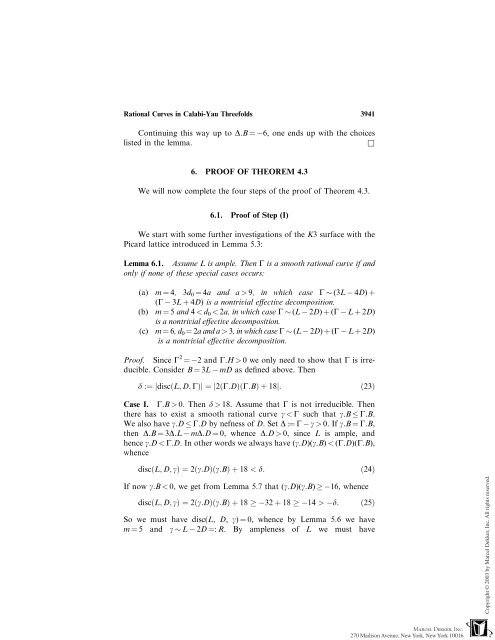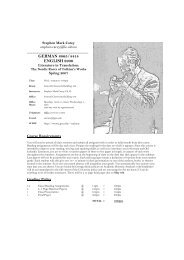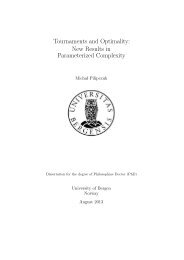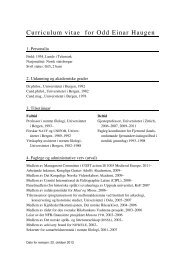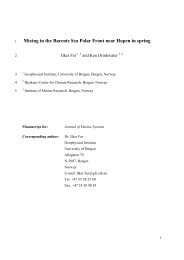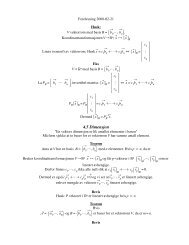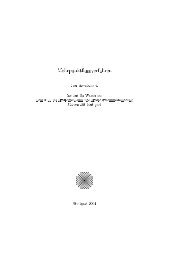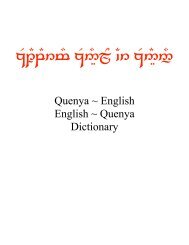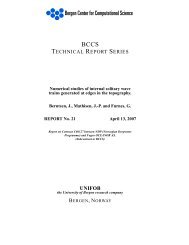Rational Curves in Calabi-Yau Threefolds
Rational Curves in Calabi-Yau Threefolds
Rational Curves in Calabi-Yau Threefolds
You also want an ePaper? Increase the reach of your titles
YUMPU automatically turns print PDFs into web optimized ePapers that Google loves.
<strong>Rational</strong> <strong>Curves</strong> <strong>in</strong> <strong>Calabi</strong>-<strong>Yau</strong> <strong>Threefolds</strong> 3941<br />
Cont<strong>in</strong>u<strong>in</strong>g this way up to D.B ¼ 6, one ends up with the choices<br />
listed <strong>in</strong> the lemma. &<br />
6. PROOF OF THEOREM 4.3<br />
We will now complete the four steps of the proof of Theorem 4.3.<br />
6.1. Proof of Step (I)<br />
We start with some further <strong>in</strong>vestigations of the K3 surface with the<br />
Picard lattice <strong>in</strong>troduced <strong>in</strong> Lemma 5.3:<br />
Lemma 6.1. Assume L is ample. Then G is a smooth rational curve if and<br />
only if none of these special cases occurs:<br />
(a) m ¼ 4, 3d0 ¼ 4a and a > 9, <strong>in</strong> which case G (3L 4D) þ<br />
(G 3L þ 4D) is a nontrivial effective decomposition.<br />
(b) m ¼ 5 and 4 < d 0 < 2a, <strong>in</strong> which case G (L 2D) þ (G L þ 2D)<br />
is a nontrivial effective decomposition.<br />
(c) m ¼ 6, d0 ¼ 2a and a > 3, <strong>in</strong> which case G (L 2D) þ (G L þ 2D)<br />
is a nontrivial effective decomposition.<br />
Proof. S<strong>in</strong>ce G 2 ¼ 2andG.H > 0 we only need to show that G is irreducible.<br />
Consider B ¼ 3L mD as def<strong>in</strong>ed above. Then<br />
d :¼ jdiscðL; D; GÞj ¼ j2ðG:DÞðG:BÞþ18j: ð23Þ<br />
Case I. G.B > 0. Then d > 18. Assume that G is not irreducible. Then<br />
there has to exist a smooth rational curve g < G such that g.B G.B.<br />
We also have g.D G.D by nefness of D. Set D :¼ G g > 0. If g.B ¼ G.B,<br />
then D.B ¼ 3D.L mD.D ¼ 0, whence D.D > 0, s<strong>in</strong>ce L is ample, and<br />
hence g.D < G.D. In other words we always have (g.D)(g.B) < (G.D)(G.B),<br />
whence<br />
discðL; D; gÞ ¼2ðg:DÞðg:BÞþ18 < d: ð24Þ<br />
If now g.B < 0, we get from Lemma 5.7 that (g.D)(g.B) 16, whence<br />
discðL; D; gÞ ¼2ðg:DÞðg:BÞþ18 32 þ 18 14 > d: ð25Þ<br />
So we must have disc(L, D, g) ¼ 0, whence by Lemma 5.6 we have<br />
m ¼ 5 and g L 2D ¼: R. By ampleness of L we must have


